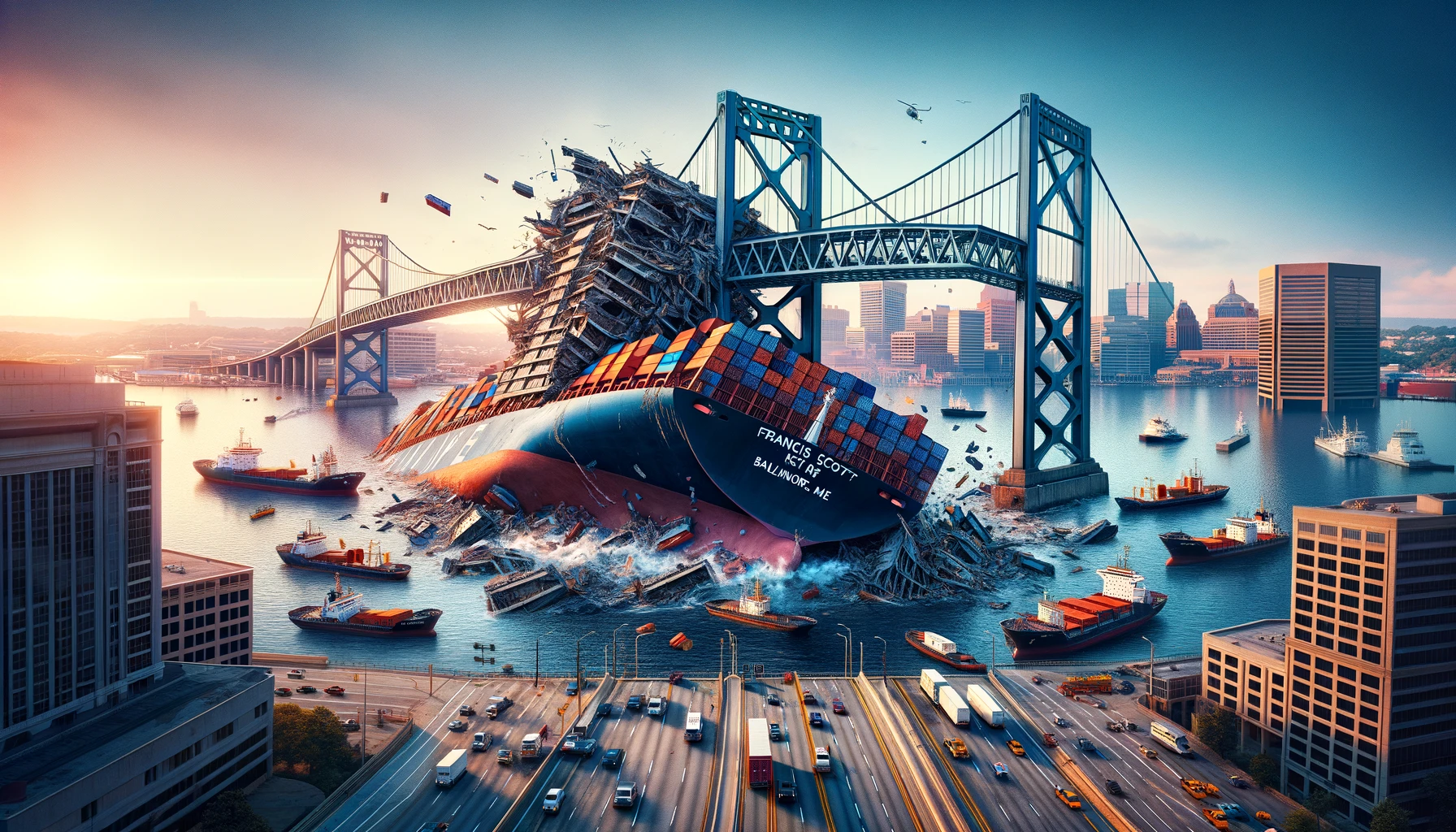
In a harrowing incident early on Tuesday, the Francis Scott Key Bridge in Baltimore, Maryland, collapsed following a collision with the container ship Dali, which was en route to Sri Lanka. The catastrophe resulted in the loss of two construction workers, Alejandro Hernandez Fuentes and Dorlian Ronial Castillo Cabrera, whose bodies were found submerged in their red pickup truck in the waters of Baltimore Harbour. Maryland State Police confirmed the recovery from about 25 feet of water near the bridge’s mid-section. This calamity is part of a broader tragedy that saw six of the eight-man crew of the bridge presumed dead, with four still missing amidst the debris, as stated by Maryland authorities.
The incident, which occurred due to the Dali losing power and colliding with the bridge’s support column, has led to significant operational halts at the bustling Port of Baltimore. The port, a crucial hub for the U.S. Eastern Seaboard’s trade, particularly in automobile and farm equipment freight, faces indefinite closure. The National Transportation Safety Board (NTSB) has initiated a thorough investigation into the crash, which may take up to 24 months to complete. New details emerging from the ship’s black box and recordings of radio chatter before the crash offer insights into the moments leading up to the disaster.
The economic ramifications of this tragedy are profound, affecting not only the port’s operations but also the broader trade network it supports. As recovery and salvage operations continue, authorities emphasize the shift from rescue to salvage efforts, underscoring the severe impact on infrastructure and lives. The Coast Guard has assured that the ship poses no environmental threat despite carrying hazardous materials, including oil. The community and nation now mourn the loss and brace for the long-term effects of this devastating event.
Pic Courtesy: google/ images are subject to copyright









